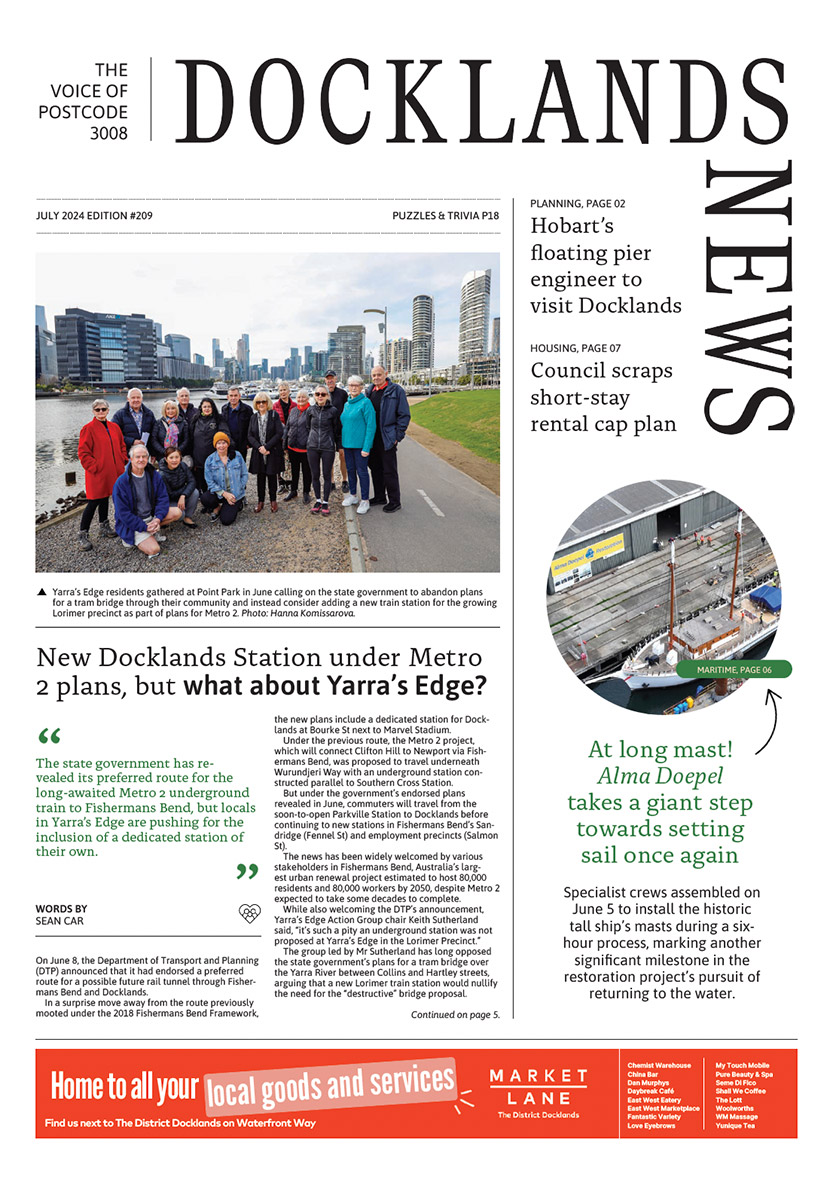Urban forests bringing pleasure to residents
By Jess Carrascalao Heard
The City of Melbourne has unveiled six green spaces which are thriving after receiving matched funding via the Habitat Grants under the Urban Forest Fund 2020 program.
The grants scheme saw up to $5000 of matched funding for residential owners’ corporations (OCs) to create green spaces on privately-owned, residential properties.
The six gardens are located across the municipality, including at a unit complex at Yarra Point on Point Park Crescent where a new sustainable garden was created just before lockdown last year.
With around 600 residents, the OC at Yarra Point had a vision to create a biodiverse indigenous environment that was full of colour, movement and interest – establishing a green oasis for people and indigenous fauna to enjoy.
The area included around 355 sqm of new greening over two levels. Existing communal gardens on level five have been rejuvenated with a variety of native climbers, trees, shrubs, grasses and ground covers, including an indigenous bushfood section.
At ground level, empty garden beds were planted, alternating with Silver Banksia (Banksia marginata) and Hop Goodenia (Goodenia ovata), with indigenous grasses and ground covers interspersed throughout. Small-leaved Clematis (Clematis microphylla) will be grown as climbers on the back wall and will provide habitat structure for birds, and nectar and pollen resources for native bees.
The planting of these trees provides more than 115 sqm of canopy cover and shade.
The Habitat Grants were a part of the council’s Urban Forest Fund 2020, which saw the council supporting greening projects in a bid to accelerate the creation or enhancement of green space in the municipality.
The Habitat Grant saw the council partner with residential OCs for greening projects in common property areas.
The grant could be used for soil improvement works, plants and trees and irrigation, as well as project planning and labour as long as the cost of this was not more than 25 per cent of the project’s total cost.
Eligibility criteria for the grant included the requirement for applicants to show that their project would deliver more overall green cover than had existed previously, as well as using only “in-ground planting”, have a maintenance plan and include some plant species which were indigenous to the local area.
The council’s environment portfolio lead Cr Rohan Leppert said, “These projects maximise green space for people and wildlife on residential properties, and I look forward to seeing these green spaces thrive.”
Cr Leppert said that although the council was committed to 3000 plantings a year on public land, a significant portion of land in the municipality was privately owned.
“It’s crucial that we work with OCs to increase greenery on their sites,” Cr Leppert said.
The garden that occupies the green space at the complex now is cohesive, coherent and sustainable, with a semi-desert feel thanks to the addition of rock and gravel.
For the greening projects which received the funding, there were several different points of focus.
One project at Altona St in Kensington focused on helping create a wildlife corridor between JJ Holland Park and Warun Biik Linear Reserve. The historic fire station complex at 100-110 Curzon St in North Melbourne had funding awarded for phase one of their greening project to help see the replacement of contaminated soil and the existing lawn and shrubbery.
One of the aims for this project was to have 60 per cent local indigenous plants in the garden beds.
For 78 The Avenue, Parkville, its west-facing orientation meant that heat had to be considered, as well as sustainability and ease of maintenance. Its design focused on sustainability in a warming climate, with more tree cover, native plants, and sections of lawn now a habitat for lizards and insects with rocks, logs and grasses •

New Docklands Station under Metro 2 plans, but what about Yarra’s Edge?





 Download the Latest Edition
Download the Latest Edition